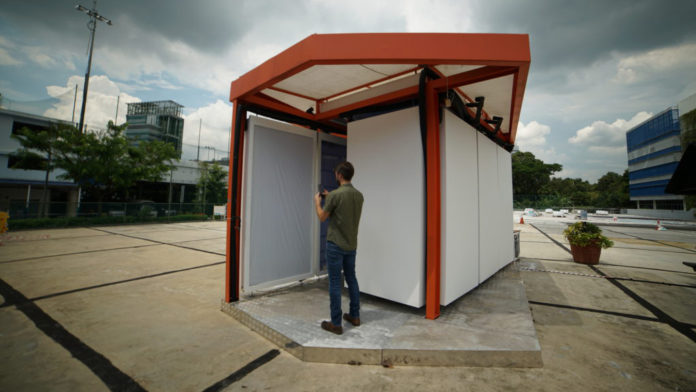Is it possible for people to feel cool in a hot room without chilling the air around them?
Air conditioning is the common solution to heat and humidity, but it’s incredibly inefficient. It needs to cool and dehumidify all the air in the room for the people in it to feel comfortable. That takes a lot of power and all the heat from inside gets displaced to the outdoors, plus extra heat generated from operating the device, making our cities measurably hotter.
More than that, central air conditioning can also recirculate germs and cause breathing problems, and that’s a growing concern amidst the COVID-19 pandemic. It also requires windows to stay closed, restricting the circulation of fresh air.
But there’s another way to cool people without cooling the surrounding air at all.
A team of researchers from the University of British Columbia, Princeton University, the University of California, Berkeley, and the Singapore-ETH Centre developed a completely different system they call Cold Tube. It’s a radiant-cooling technology that absorbs heat directly emitted by radiation from a person, bypassing the need to cool the air passing over their skin.
There are three ways for heat to be transmitted from a hotter object to a cooler one: conduction, convection, and radiation. Conduction requires two objects in direct contact with each other. Convection, which is how air conditioning operates, works by changing the temperature of a fluid medium as an intermediary between two objects. Radiant heat transfer allows cooler objects to absorb heat energy radiating out of hot objects in invisible infrared radiation waves directly. It’s the same warmth that you feel in the sunshine or next to a campfire, but in reverse.
Cold Tube is composed of wall or ceiling panels that are kept cold by circulating chilled water through an array of thin tubes. Because heat naturally moves from hotter surfaces to cooler surfaces by radiation, standing beside or under the cool panels draws heat away from the body.
Cold Tube overcomes two obstacles that stood in the way of radiant-cooling technologies. Firstly, a special air-tight membrane made of low-density polyethylene is used to insulate the water-carrying tubes from humid air so that unwanted condensation won’t form. At the same time, the membrane is also transparent to infrared radiation so that radiant heat can still be drawn away.
Secondly, it was assumed that the cool water would cool the adjacent air by convection to the point where radiant cooling would lose effectiveness. Cold Tube proves that this doesn’t have to be the case.
Removing the need to dehumidify the air to prevent condensation and mold growth in treated spaces saves up to 50 percent of typical air conditioning energy consumption.
“Because the Cold Tube works independently of indoor air temperature and humidity, keeping windows open in our increasingly hot summers while still feeling comfortable becomes possible,” said project co-lead Forrest Meggers, assistant professor at Princeton’s school of architecture, in a press release.
As climate change continues to push outdoor temperatures higher, having more efficient ways to cool our homes and other buildings is becoming more important. Cold Tube offers a new mechanism to tap into and makes it a practical and energy-efficient alternative to air conditioning.
Inside an outdoor Cold Tube installation in tropical Singapore, demonstrating how thermally transparent membranes separate air cooling from radiant cooling, maintaining comfort without cooling the air or forming condensation. Credit: Cold Tube Project Team.










































